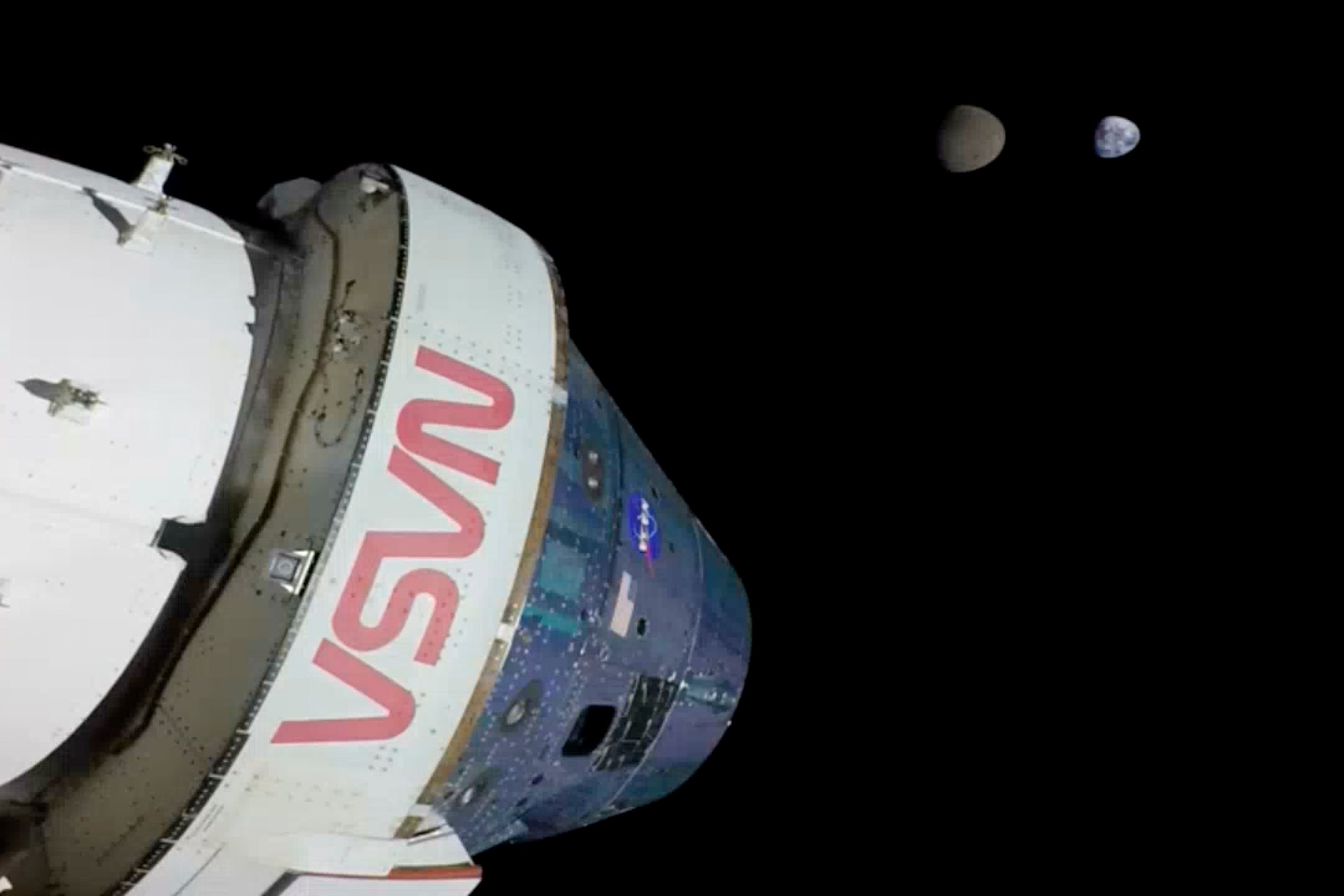Nasa’s Orion capsule splash-lands in ‘textbook’ return to Earth from the Moon
The spaceship was launched aboard the Artemis 1 rocket on November 16 from the agency’s Kennedy Space Centre in Florida.

Your support helps us to tell the story
From reproductive rights to climate change to Big Tech, The Independent is on the ground when the story is developing. Whether it's investigating the financials of Elon Musk's pro-Trump PAC or producing our latest documentary, 'The A Word', which shines a light on the American women fighting for reproductive rights, we know how important it is to parse out the facts from the messaging.
At such a critical moment in US history, we need reporters on the ground. Your donation allows us to keep sending journalists to speak to both sides of the story.
The Independent is trusted by Americans across the entire political spectrum. And unlike many other quality news outlets, we choose not to lock Americans out of our reporting and analysis with paywalls. We believe quality journalism should be available to everyone, paid for by those who can afford it.
Your support makes all the difference.Nasa’s Orion capsule has splash-landed in the Pacific after completing a 2.25 million km (1.4 million mile) test flight to orbit the Moon, paving the way for the next generation of manned lunar missions.
The spaceship was launched aboard the Artemis 1 rocket on November 16 from the agency’s Kennedy Space Centre in Florida.
It has since successfully orbited the Moon, breaking the record for the furthest travelled by any spacecraft designed to carry humans by reaching more than 400,000km (270,000 miles).
The capsule, which only had mannikin passengers on board, passed within 129km (80 miles) of the far side of the Moon, using lunar gravity as a slingshot for the 381,000km (237,000-mile) ride back to Earth.
It also passed over the landing sites of Apollo 12 and 14.
But at 1931km (1,200 miles) up, it was too high to make out the descent stages of the lunar landers or anything else left behind by astronauts more than 50 years ago.
The capsule would have been travelling at 40,000km/h (25,000mph) – or 32 times the speed of sound – when it breached the Earth’s atmosphere, creating temperatures up to to 3,000C (5,000F) – about half the temperature of the surface of the sun.
As it entered the atmosphere, Orion’s speed will have slowed down to around 523km/h (325mph), before it deployed its 11 parachutes to slow down further to a splashdown speed of 32km/h (20mph) or less.
It then completed a descent to a target area off Mexico’s Baja California where USS Portland was waiting to pick it up from the water.
It landed in the water at 5.40pm (GMT) after a journey of 25 days, 10 hours, 54 minutes and 50 seconds.
A Nasa spokesman said it was a “textbook” return to Earth.
The organisation posted on Twitter: “Splashdown. After traveling 1.4 million miles through space, orbiting the Moon, and collecting data that will prepare us to send astronauts on future #Artemis missions, the @NASA_Orion spacecraft is home.”